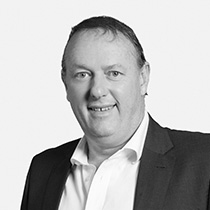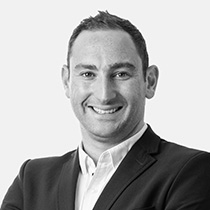The Fund increased by 1.0% in the second quarter of 2023 (Q2-23). This continued improvement in short-term performance is encouraging, with the 12-month return now sitting at 13.7%. Despite the strength of the short-term figures, we remain excited about the Fund’s prospects as we feel the assets owned remain extremely attractively priced.
During the quarter, some animal spirits returned to the market, but were fairly concentrated on what market participants are calling “AI beneficiaries”. It resulted in seven mega cap stocks (Apple, Microsoft, Nvidia, Alphabet, Meta, Amazon, and Tesla) accounting for 85% of the S&P500 Index return year to date. This lack of breadth in market return is at historic highs, which implies the return of all 493 of the other S&P500 constituents has been anaemic. Fortunately, the Fund owned four out of these seven mega caps, but we have been reducing our exposure to these companies more recently as their risk-adjusted upside has become less attractive. At the end of June 2023, we had 4.93% exposure to these stocks versus 9.18% at the end of March 2023. This capital has been recycled into more attractive ideas, some of which are discussed in more detail below.
While market level valuations appear expensive, this is skewed by some of these mega caps which have experienced material re-ratings in their valuation multiples, and thus we continue to find compelling investment opportunities outside of this group. As such, the weighted average equity upside of the Fund is currently 67%, which remains one of the highest levels since inception nearly 24 years ago. Beyond this, the weighted equity five-year internal rate of return (IRR) is 18% and weighted equity free cash flow (FCF) yield for stocks owned is 6%. Using the rand-denominated Fund’s long-term track record (expressed in USD) as proxy*, over the past five years, the Fund has generated a positive return of 1.6% per annum (p.a.), over 10 years a return of 3.5% p.a. and, since inception 24 years ago, 7.9% p.a.
During the quarter, the largest positive contributors were Alphabet (+15%, 0.48% positive impact), Uber (+36%, 0.47% positive impact), and Meta (+34%, 0.42 positive impact). The largest negative contributors were JD.com (-22%, 0.8% negative impact) and Capri Holdings (-24%, 0.65% negative impact).
FUND POSITIONING
JD remains a 3.5% position in the Fund as we have been incrementally adding to it as it has underperformed. The valuation remains extremely compelling, trading at 5x FCF to enterprise value (EV). The business is undergoing a turnaround, including the return of its well-regarded founder (who owns 13% of the business), to the driving seat to reignite growth. Expectations are very low and there is a significant margin of safety due to the low valuation, and we believe with some patience shareholders can expect to be rewarded well in future.
Capri is another business undergoing an operational turnaround that involves actively reducing its exposure to the wholesale retail channel. Capri owns the Michael Kors brand, and this is where the operational turnaround is focused. The business also owns the iconic Versace brand and Jimmy Choo, both of which are underearning in our view. Capri trades on 5x earnings and continues to undertake what we deem are value accretive share buybacks due to the low valuation.
The Fund ended the quarter with 76% net equity exposure, down from 81% in the prior quarter. This reduction was partly driven by the above-mentioned reduction in our mega cap technology exposure and then we also bought more put protection on various indices during the period.
Both sovereign and corporate bond yields have dramatically increased across the world, presenting some interesting credit opportunities. We recently bought Quilter (a UK wealth manager) corporate bonds, which yield just under 9% in GBP. We also purchased UK government bonds yielding ~4.5% as a cash alternative, while continuing to buy short-dated US Treasuries yielding ~5.4%. Considering these attractive hard currency yields, we sold out of our South African government bond position as we believe the purchased bonds are more attractive from a relative risk perspective. In addition to these new purchases, we continue to hold Delivery Hero convertible bonds which have a yield-to-maturity until 2027 of ~8% in EUR. The Fund now has ~11% exposure to sovereign and corporate bonds, a much higher-level compared to the past, as we believe yields have now begun to rise to levels that compensate you for the risk taken.
We continue to have a 1% holding in AngloGold Ashanti due to the fundamental attractiveness of the business, but down from 2% in the prior quarter as its relative attractiveness has reduced versus other opportunities. The balance of the Fund is invested in cash, largely offshore.
Notable increases in position sizes (or new buys) during the quarter were Thermo Fisher (Life Sciences), Novo Nordisk (Healthcare) and Ryanair (low-cost airline).
Thermo Fisher is a business that provides the instruments, ingredients, and services to pharmaceutical and biotech companies to develop and manufacture drugs. The business has been built through M&A, the result of which is a significantly diversified business, both geographically and across product and service lines, which should make it more resilient. While M&A is a key component of growth, Thermo Fisher has a great track record in this respect and the market remains fragmented, providing them with a long runway for growth. The underlying end market of drug discovery and manufacturing is structurally supported by an increasing disease burden across society and the growth of biotech engineered drugs. Biotech funding has come under some pressure recently as the cost of capital has increased worldwide, thereby resulting in near-term growth slowing for Thermo Fisher. However, we believe this is cyclical as opposed to structural and the business should be able to grow earnings per share (EPS) in the mid-teens over the next few years. You can buy the business today on 20x earnings, which we believe is attractive considering this earnings growth.
Novo Nordisk is a healthcare company focused on diabetes care, but more recently has developed a drug that helps with weight loss. Diabetes is a global epidemic that is getting worse as societies become more affluent, and Novo Nordisk has a market-leading product (gaining market share) to address this disease that also has a structurally growing patient population. With the underlying demand for weight loss solutions being very high globally, Novo Nordisk’s new drug for weight loss Wegovy is showing promising results as it rolls out. This is a business that already has phenomenal underlying financial metrics, generating EBIT margins of >40% and a ROIC of ~60%, with EPS growth expected to be sustainably in the high teens, and potentially even higher should the weight loss drug garner global appeal. While the near-term multiple is fairly high at 26x, this unwinds quickly due to the strong EPS growth expected.
Ryanair is a low-cost airline operator (growing market share) with an unrelenting focus on cost control, allowing it to offer lower ticket prices to customers while earning industry leading margins. Importantly for an inherently cyclical industry, Ryanair operates with a net cash balance sheet and has recently revamped its fleet and thus should experience falling capex going forward, while also leveraging the inherent cost efficiencies that come with newer fleets and which is supportive of margins. The business should therefore generate significant FCF over the coming years. We estimate over EUR6bn in cumulative FCF should be generated over the next three years, which equates to roughly a third of the current market capitalisation making the investment attractive with the potential for meaningful capital returns.
OUTLOOK
The chance of a recession in the US and parts of the EU and UK, coupled with the consistent geopolitical tension globally, persistent high inflation and elevated interest rates are just some of the notable risks prevailing that will most likely drive continued market volatility. We remain aware of these risks, and they are factored into our portfolio construction. However, the primary focus remains bottom-up analysis of individuals businesses. Against this uncertain backdrop, we remain excited about the outlook for the Fund, which has been built from the bottom up, with a collection of attractively priced assets to provide diversification to achieve the best risk-adjusted returns going forward in a variety of future scenarios.
*Note that this is a new fund and, as such, does not yet have a track record for the relevant periods. As it is the dollar-denominated version of the same investment strategy deployed historically in the management of the rand-denominated Coronation Global Optimum Growth [ZAR] Feeder Fund, we show the track record of the latter portfolio, converted to US dollars, to indicate historical results achieved by the strategy.
Disclaimer
SA retail readers
 South Africa - Personal
South Africa - Personal



